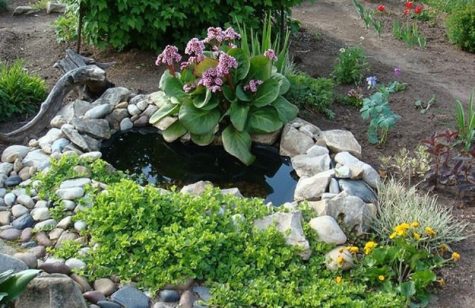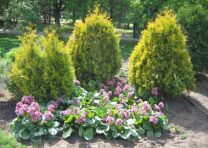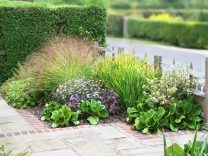Badan is a spectacular garden plant. Its large leathery leaves retain their decorativeness even in winter. When planting frankincense in open ground, caring for it is not difficult. It is only important to choose a convenient place for him and organize the right care.
Material Content:
Varieties of incense and its varieties
The most common types of this plant are frankincense (it is also called medicinal) and frangipani. Such varieties exist in the wild. Recently, more species of the Pacific have begun to grow colorful and purple.

Today, the plant has become popular with gardeners and breeders have engaged in its breeding.
So there were new hybrids:
- Baby Doll, or Doll. Flowering begins in April-May. Light pink inflorescences look like small bells. The leaves are rounded.
- Britten. Its soft pinkish petals look like apple blossoms.
- Purple Glocken. Blooms in May with fragrant purple inflorescences.
- Morgenrote and Sunningdale. Late-flowering varieties. The peak of flowering of this species is the middle of summer.
Varieties differ in color and shape of the leaves; they may have jagged or wavy edges.
The nuances of growing
Badan well tolerates cold winters, not afraid of frost. The flower does not require special growing conditions. It can grow in a shady corner of the garden, and in a sunny place, the main thing is that in the midday heat a shadow will fall on it.
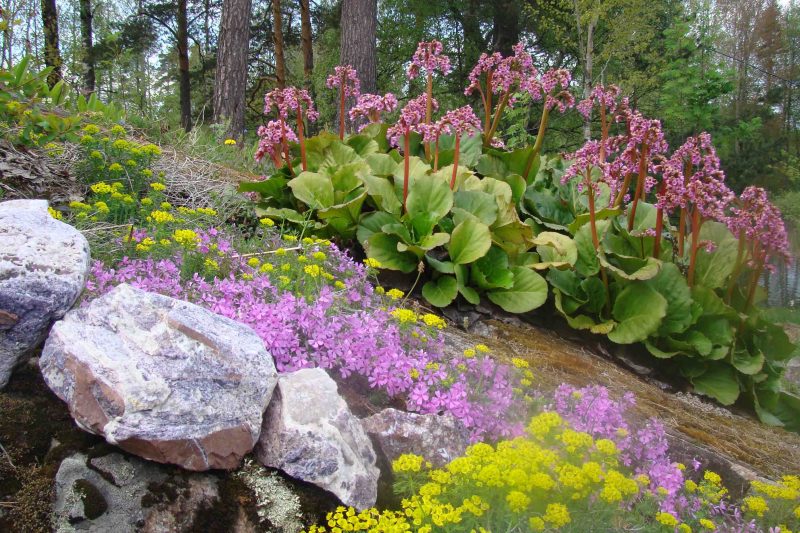
- It does not make much demands on the soil.
- When choosing a place for a canoe on a site, you should know that it does not tolerate stagnation of water and excess moisture. Of course you need to water it, but it is better to tolerate a lack of water than its excess.
- During flowering, dried flowers are harvested.
- For good growth and flowering, this large plant must be fed.
- The soil around the bushes must be loosened, preventing it from drying out.
- Weeds are suppressed under powerful leaves.
Outdoor landing
The birthplace of this plant is Siberia. A flower grown in such harsh conditions can grow in any region of Russia.

For him to develop well, he needs to create an environment close to natural. For planting, you should choose a light fertile soil, not clay and well-drained.
Planting is best in spring or late August.
Landing is done in three ways:
- bush with leaf sockets;
- prepared seedlings;
- rhizome.
A bush plant is replanted in late summer.
With this method, the following manipulations are performed:
- They carefully dig out the incense without damaging the rhizome, and together with the earthen lump they plant it in a prepared hole with water.
- Sprinkle the landing with earth and compact.
- The next watering is done in a week.
- By frost, the bush will take root and calmly endure the winter.
Planting seedlings in the soil is produced when heat occurs in June. Seedlings are planted in prepared wells. Removing the plant from the container, you need to make sure that the soil is preserved on the roots. Saplings should not be planted in a sunny place.
Rhizome is planted in April. It should have five sleeping kidneys. Before planting, the roots must be placed in water for several hours. The planted plant is mulched with peat.
When planting, you should prepare a spacious hole so that the roots of the plant fit well in it.
Caring for a plant of frankincense
Caring for this plant will not be burdensome. If you did everything right when planting, the flower will not require much attention.
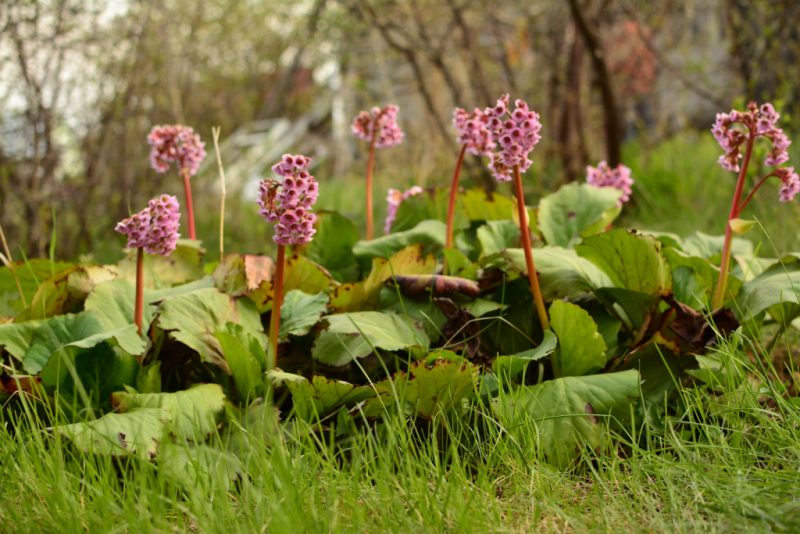
- For growth and abundant flowering, the plant will require enough water. This does not mean that it must be continuously watered. It is important to monitor the condition of the soil and water the plant when it dries, avoiding excess and stagnation of moisture.
- Plant nutrition is important. It is fertilized twice a month. To do this, use mineral and organic fertilizers. Liquid feeding of 1 tbsp will be good. tablespoons nitrofoski and 2 tbsp. spoons of Effekton-Ts organic fertilizer diluted in 10 liters of water.
In the spring, you should give the plant a neat attractive appearance. To do this, dried leaves are removed, long shoots are shortened. The earth around is loosened, weeds are removed. The plant can grow in one place for up to 10 years. In the future, it should be transplanted to another place, dividing the overgrown bush into smaller parts.
Badan after flowering
After flowering is complete, the flower of the frankincense must be fed. To do this, you can use the Kemira-Kombi fertilizer. One tablespoon of the composition is dissolved in 10 l of water and watered under the root.

Faded peduncles should be trimmed to maintain a neat appearance.
After flowering, seeds are also harvested. In order not to lose them, they put on bags of gauze on wilted flowers. In September, cut inflorescences are placed in a dry, ventilated room. Here they are dried for several weeks, then poured from sachets, cleaned and sent for storage.
Plant propagation methods
Badan is propagated by seeds, cuttings and division of the bush.
Seed propagation
Badan has small black seeds. They are sown immediately after harvesting directly on the surface of the prepared beds, sprinkled with moist soil on top. All summer they watch that the earth does not dry out. For winter, crops are covered with fallen leaves.

You can sow the seeds in open ground in May. They sprout in a few weeks. Further care is performed as usual for the sprouted seedlings. In the fall, shelter young animals.
Seedlings develop very slowly, in the first year miniature rosettes with a height of 2.5 cm are obtained. Upon reaching a height of 10 cm, the plant is dived and planted at a selected place for further growth. Four years later, the incense will strengthen and begin to bloom.
The cultivation of incense by cuttings
Healthy plants not younger than 4 years old are used for reproduction.

- Before planting, a part of the root with three buds and leaves is separated from the bush.
- Leave two or three leaves.
- Cuttings are planted in the ground, observing a distance of 40 cm between them.
- The roots are buried in the ground to a depth of 4 cm. Within a few days, the stalk will take root.
Further care for seedlings is carried out, as well as for adult plants.
Diseases, pests and care during this period
If you follow the rules of caring for the plant, carefully prepared the soil for planting, diseases can be observed in the incense. But there are still some troubles to which he may be exposed.
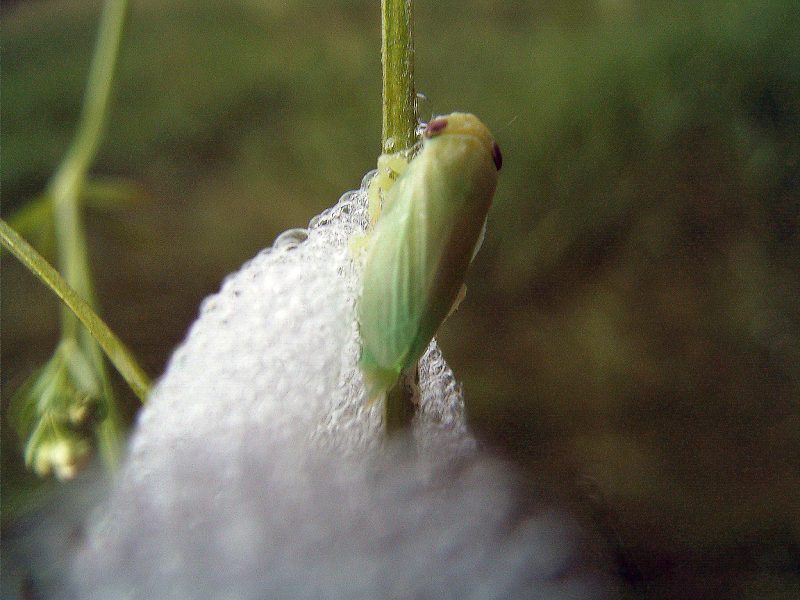
- Penny drooling. This pest appears if the bush grows in complete shade and on too moist soil. Pennitsa secretes saliva, which contains larvae. Parts of the plant, covered with saliva, rot and then dry. Saliva protects larvae well, so folk remedies do not destroy it. To get rid of pennies, use such chemicals as “Tsvetofos”, “Intavir”.
- Nematode. This roundworm lives in the soil and lays larvae that look like balls. A dangerous pest breeds very quickly. To destroy it, you need to dig a diseased plant. With a small amount of damage, you can remove the diseased roots and transplant the bush to a new place. The soil should be treated with chemicals and during the year any crops cannot be planted in this place.
- Badan is susceptible to leaf spotting. Dark spots cover the leaves on the front side, and a white coating appears on the back. In the fight against the disease, the diseased parts of the flower are necessarily removed and Bordeaux fluid is used. Unfortunately, even a low temperature does not destroy this fungal disease.
Use in landscape design
Badan is a spectacular large plant. It looks advantageous in combination with many decorative cultures, and therefore is one of the favorite plants for landscape design of garden plots and park areas.
Beautiful will be the floral arrangements of frankincense and such plants as:
- fern;
- magnolia;
- astilbe;
- juniper.
They will decorate the shady corners of the plot.
The spring flowerbed is picturesque, where I will surround the primrose - hyacinths, blueberries, crocuses, snowdrops.
The incense will be inconvenient neighborhood with creeping creeping flowers. Its sprawling bush will interfere with their growth, which will not make a beautiful element in the design of the garden.
On top of everything, frankincense has medicinal properties. Healing is a thick-leafed incense. When its leaves turn black, they are used to make a healthy drink. The black leaf of the plant is part of "taiga tea" - it strengthens the immune system and has a tonic effect. It has long been used by hunters and geologists, going to the taiga.
Having become acquainted with such a beautiful and useful plant as a frankincense, it is impossible not to plant it in your garden. Moreover, the flower does not require special care and will always delight with its healthy appearance.


